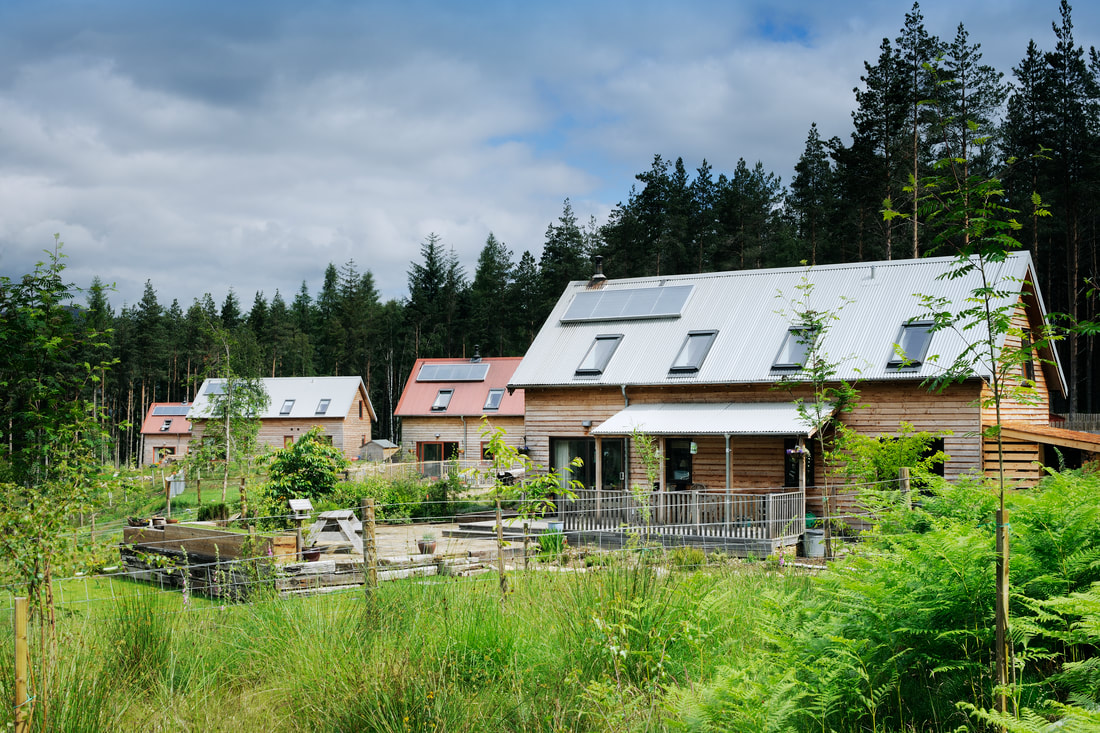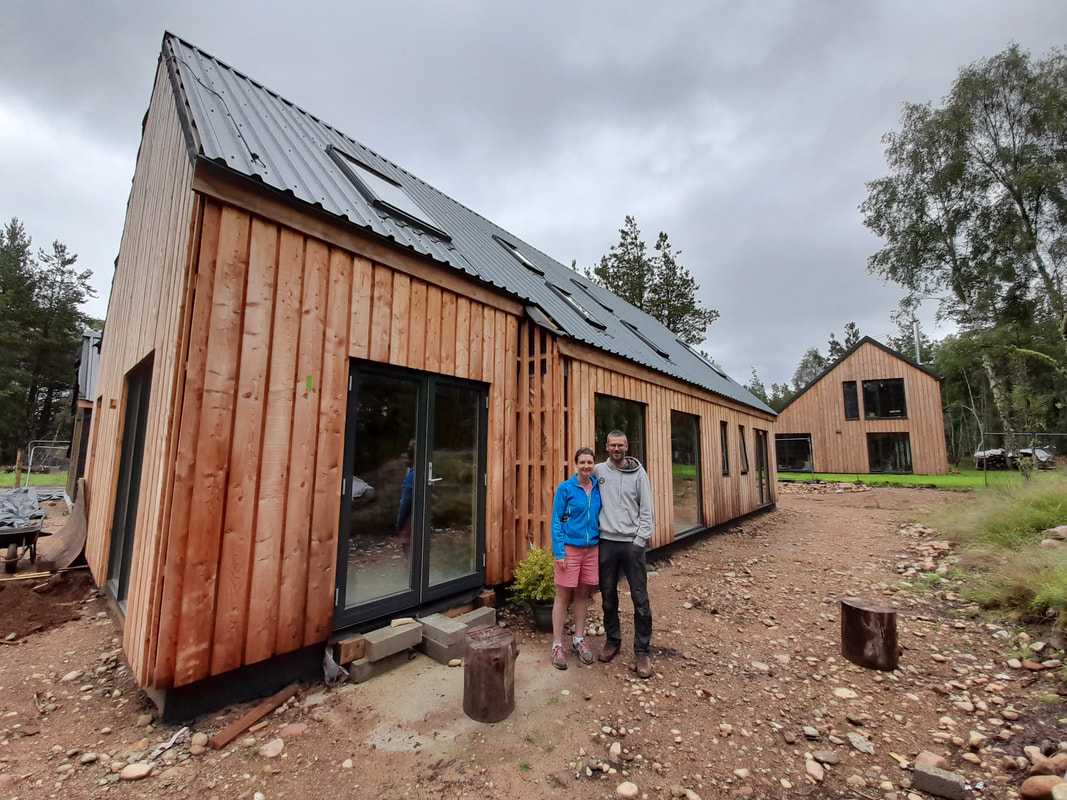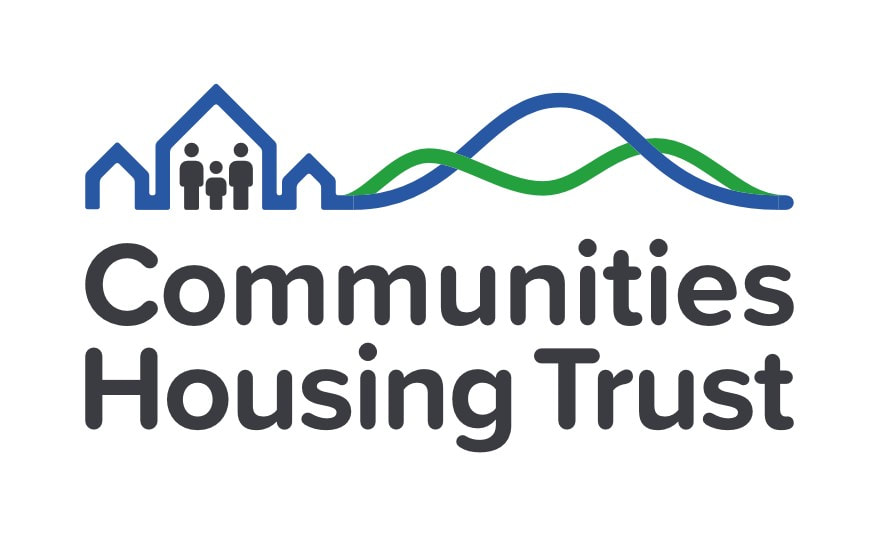|
Scottish Housing Day is back for a sixth year continuing to highlight challenges and achievements across the housing sector. As the world's attention will be on Glasgow for the UN's climate conference COP26 in November, this year the focus is on housing and the climate emergency. Around 13% of Scotland’s carbon emissions are related to the way we heat our homes. The Scottish Government has introduced ambitious targets to reach net zero carbon emissions by 2045 and has committed that, from 2024, gas boilers will no longer be installed in new homes. The Communities Housing Trust has now been working with communities across Scotland for over 20 years, providing affordable homes, amenities, infrastructure, and addressing social inequalities. Over the years we've worked on some fantastic developments which really echo this urgent call for change and the wish to be net zero as a country by 2045. So, for this year's Scottish Housing Day, we wanted to highlight just a few of our community-led projects which have addressed the climate emergency, in different ways, to share what's been done practically, to inspire others, and to raise confidence that solutions do exist. Communities Housing Trust: community-led developments and the climate emergencyHow else to start than with Scotland's first public building to be awarded Passivhaus status? As well as being highly energy-efficient, the GALE Centre in Gairloch is a Tourist Information Hub, and includes a community shop and cafe which stocks produce from over 40 local suppliers, helping to support the local circular economy. It also provides office space for Gairloch & Loch Ewe Action Forum (GALE), enabling them to employ staff year-round as a more stable rural community, and has rooms for community groups to use... ...as well as growing space for veggies, fruit and herbs outside, for use in the community cafe! The building is part of the Achtercairn development, which also included affordable housing, a shop and other amenities, creating a new centre for the village on a derelict site. (If you want to know more, we're running an event about this development and 20-Minute Neighbourhoods next week, on Thurs 23 September - more info and register here). Or how about the Ardgeal development near Kincraig in the Cairngorms National Park? The former forestry land was obtained through the National Forest Land Scheme, and the timber felled from the site was used in the construction of the homes... ...similar to these self-build homes in Salen, where a group of local families got together to come up with a solution to their housing issues. As foresters, they were also able to mill timber from on-site for the cladding, and build much of the homes themselves. Likewise in Rothiemurchus, near Aviemore, these affordable self-builds use local timber, local companies in the construction, and are highly fuel- and energy-efficient, with triple glazing and air-source heat pumps. One has solar photo-voltaics, with more to follow suit, and EPCs on the homes range from B+ to A. The Old Sawmill development has just been shortlisted in the Scottish Land & Estates Rural Housing category of the 'Helping It Happen' Awards. We’re really aware how difficult it is as a local person working in this area to find a house and especially to build your own house, but we know it’s possible now. It wasn’t easy and it took a while! But it has worked, and it’s our wish that going through this unwieldy planning process can, and should, make it easier for local residents undertaking such ventures in the future. The Greener Homes scheme was a partnership between the Communities Housing Trust and the Highland Council, funded by the Scottish Government, to reduce carbon emissions in housing, invest in greener technologies, reduce fuel poverty, and support regional skills development and business opportunities in greener housing. Homes in Fodderty (pictured above), Arisaig, Lochcarron and Daviot were built in partnership with award winning MAKAR Construction Ltd. The homes were designed and constructed using sustainable Scottish timber. Further homes were constructed in Alness and Dornoch by CHT and the Highland Council. Currently under construction are 12 affordable homes in Tomintoul, Moray. Built around a shared communal space to address social isolation, the development includes several live/work spaces to provide flexibility for work in a rural area, keeping travel low. There'll also be EV charging points and the homes will be highly energy-efficient to tackle fuel poverty. And, importantly, it's not just about new builds. Here's an image of the old schoolhouse in Glendale, Skye, where we're working with the local community not only to provide affordable housing, but to use as a case study to make retrofitting and renovating for the climate emergency easier and more effective. It's currently challenging to say the least, with barriers on many fronts, yet repurposing empty and derelict buildings well will be hugely important not only to help the housing crisis, but also the climate crisis.
These projects demonstrate that it's not 'just' about what is used to construct a home, or how far it's travelled - but also how far a family may have to travel to school, to a shop, and what produce that shop stocks. Providing amenities such as this is crucially important - particularly in more rural or remote communities - and have huge positive knock-on environmental impacts. The Scottish Government has announced its support for the idea of 20-Minute Neighbourhoods, enabling people to live better, healthier lives while meeting net zero ambitions. Our community-led projects demonstrate this idea in practice, helping address the climate emergency while redeveloping rural areas. All are based on the needs of communities, and combine extensive partnership working with innovative thinking. Join our AGM next week, on Thursday 23 September, when we'll be sharing in more detail about 20-Minute Neighbourhoods and circular economies in rural areas. So! We're as positive as we can be about the climate emergency - we think we have some good models for rural housing and community development (tried and tested), suitable for meeting current and future climate needs, and we are continuing to listen to communities, test new solutions, and do even more to address the climate crisis. Our planet needs us to! What else are we doing to help address the climate emergency? We use an ethical bank - Triodos Bank - who invest in community projects, and our staff pension provider has a Responsible Investment approach and supports the goals of the Paris Agreement. We use local suppliers whenever we can, with local produce and materials - recognising this is also sometimes a challenge for a charity based in the Highlands! We use Ecosia to search the web, which plants a tree for every search. And since lockdown, we're encouraging a mix of home- and office-working which is reducing road miles and fuel emissions. |
CHT BlogThis blog features a variety of CHT’s developments and projects located throughout the central and northern Scotland. It also includes the latest news and updates regarding the Trust. Archives
September 2023
Archives
September 2023
Categories
All
|












 RSS Feed
RSS Feed
